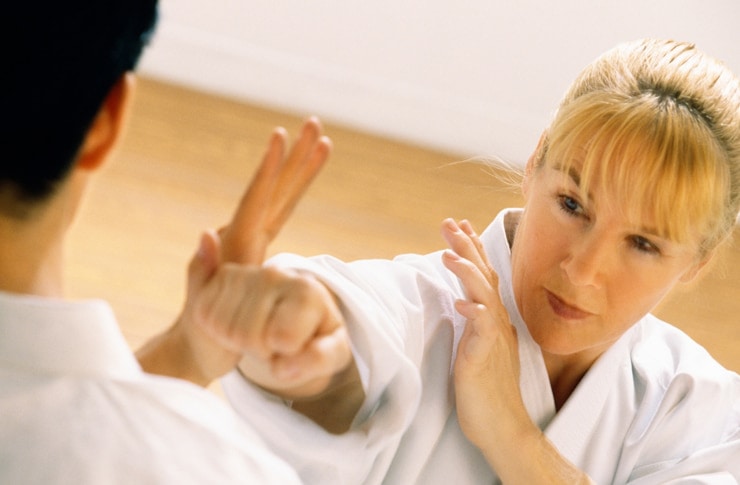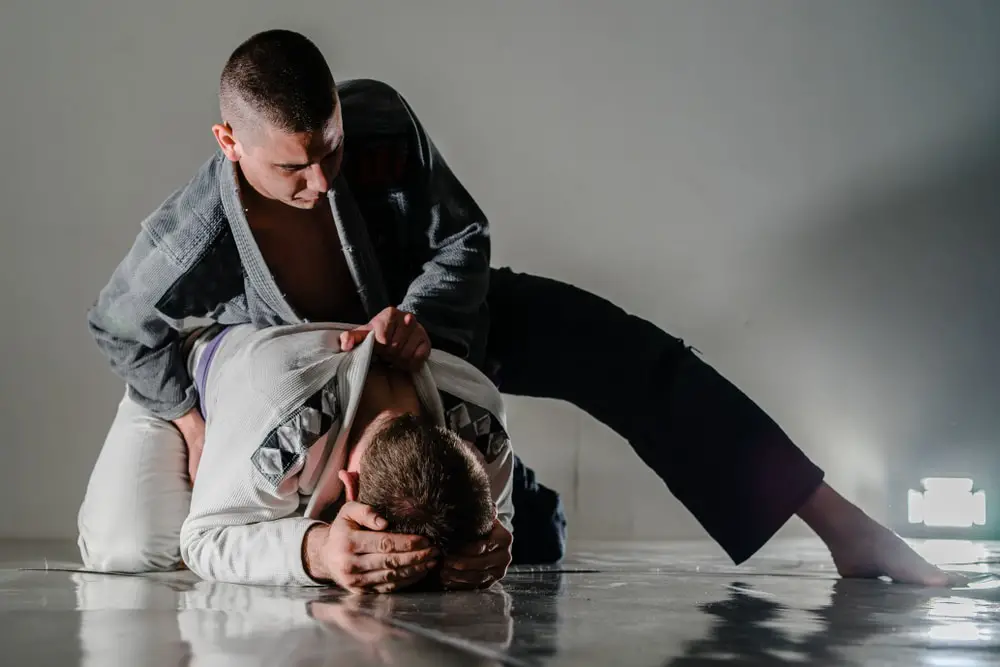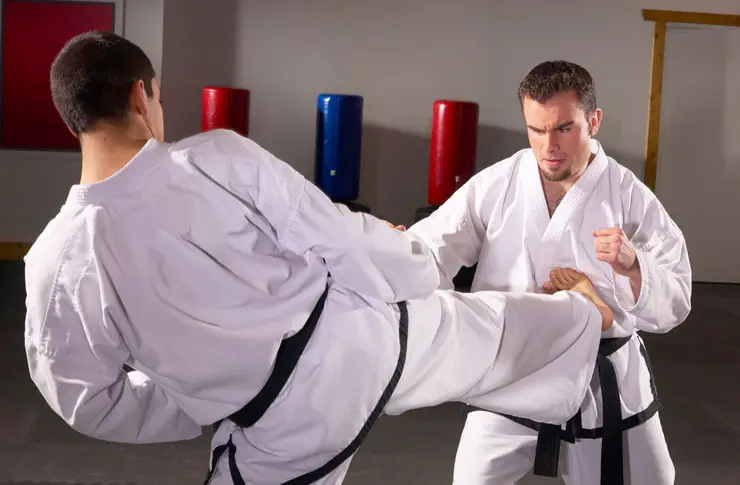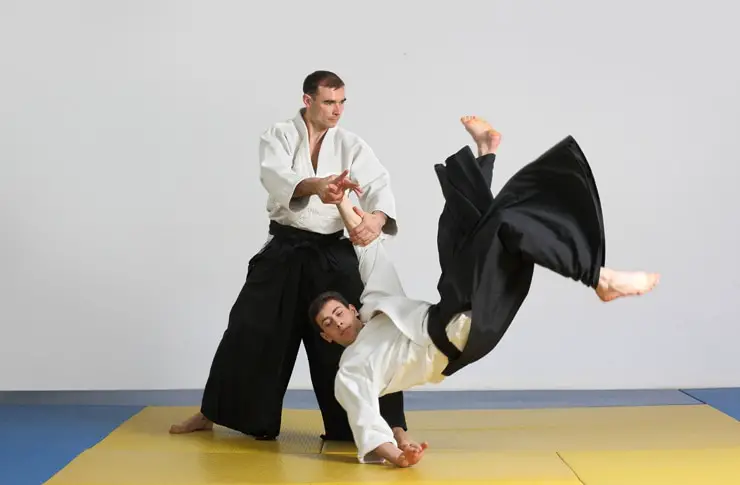
There are a lot of forms of Japanese martial arts that are being practiced all around the world, and that have been practiced for hundreds of years. These forms are some of the most well-known forms of martial arts and are known to be some of the best forms of self-defense out there.
Japanese martial art is not only about fighting but about self-control, confidence, physical and mental fitness, self-defense, and so much more. There is a lot to know about martial arts practices and how they can be beneficial to your everyday life.
A great way to start understanding Japanese Martial Art is to know where it came from, how it is used, and how it has helped people throughout history and even still today.
What Are Japanese Martial Arts
Japanese Martial Arts are forms of self-defence and combat fighting that originate back in the days of the samurai warrior during the 12th century. During this time Samurai warriors were skilled in not only self-defence moves but also weapons like a sword.
Although these forms of fighting were often violent and deadly, the origin of martial arts in Japan was based around spiritual, mental, and physical dimensions, teaching a person about self-growth and self-improvement.
Like everything else, as time went on these styles and philosophies have grown and changed and have spread different styles of martial arts and how it is practiced throughout the country. There are types of martial arts that still teach a lot based around weaponry, and many that steer away from weapons and focus solely on hand-to-hand combat.
No matter which style is practiced the core belief and basis of self-defense is going to remain similar, with each practitioner learning how to protect themselves with conscious and effective skills and techniques.
Types of Japanese Martial Arts
There are hundreds of forms of Japanese Martial Arts being practiced around the world. It would take a very long time to discuss and explain every single one of them. However, there are a few more popular forms that cover a lot about the Japanese forms of martial arts and are being practiced everywhere.
Many of the other forms known today have been developed by combining two or more of these main styles.
Hard and Soft Styles of Martial Arts
There are two forms of methodology in Japanese martial arts being hard and soft fighting styles. This is compared to the theories of Yin and Yang. The hard method is counter-acting to an attack by using direct force towards the person you are fighting.
It is more of a combat sport. Striking or pushing in attempts to defend oneself is considered a hard method of martial arts. It is said the hard methods use a lighterform of strikes and moves.
On the other hand, the soft styles of martial arts are those that avoid or redirects the opposing force. This can be done by slipping by an opponent or avoiding a strike or hit. Soft forms of martial arts are believed to utilize a more circular technique to their movements.
Although there are practices that are or use to be one style or the other, most martial arts practices these days use a blend of both techniques.
Jiu-jutsu

Jiu-Jutsu is a form of martial arts that focuses on grappling and strikes. This type of style of fighting style uses a technique that allows the fighter to use his opponent’s momentum against him. This helps a smaller fighter in combat defeat his attacker.
Techniques Used:
- AtemiWaza – Striking techniques
- NageWaza – Throwing techniques
- Kensetsu Waza – Joint manipulation
- ShimeWaza – Strangulation or choking techniques
- KatameWaza – Grappling techniques
- UkemiWaza – Falling techniques
Karate

Karate is a form of self-defense martial arts that focuses its training on respect, morals, and fair fighting. Although the techniques learned in Karate will give each practitioner the skills necessary to protect themselves in a situation where they are attacked, Karate mainly teaches self-discipline and the idea that one should only fight if they are attacked.
Techniques Used:
- Kata
- Punches
- elbow strikes
- knee strikes
- Kicks.
- Kobudo weapons training- Sai, Bo, Nunchaku, Kuwa, Nunti Bo, Surujin
Judo
Judo is a more modern form of Japanese Martial Art that stemmed from a lot of the teachings of Ju-Jutsu. This fighting style uses a lot of grappling and throws. Joint locks are also used to keep an opponent from attacking. There are many different types of Judo throws, pins, chokehold, etc., that allow a practitioner to beat their opponent without punching or kicking.
Techniques Used:
- Judo hand throws
- Judo foot techniques
- Judo hip techniques
- Judo throws-sacrifice techniques– Rear sacrifice, side sacrifice,
- Judo grappling techniques
- Judo pinning techniques
- Judo choking or strangling techniques
- Judo joint lock techniques
- Judo katas
- Judo attack patterns- Opponent on their back, you on your back, opponents on all fours, you on all fours.
Iaido
Iaido is a form of Japanese Martial arts that teaches solely on the skill of the sword. These teaching include how to handle your sword and how to effectively use it when needed. Unlike most other forms of martial arts, Iaido does not involve any type of sparring.
Techniques Used:
- Iaido Katas
- Iaido Cutting Techniques
- IaidoWaza
- Tameshigiri – Target cutting using Sharpe real blades
Aikido

The practicing of Aikido is intended to teach students how to avoid an attack and keep the opponent from connecting any blows to you. This form of martial arts was designed to re-direct the attacker away from you using grabs, throws, joint locks, etc.
Techniques Used:
- Ikkyo – First Teaching (Elbow Control)
- Nikyo – Second Teaching (Wrist Control)
- Sankyo – Third Teaching (Wrist Control)
- Yonko – Fourth Teaching (Wrist Control & Pressure Point)
- Gokyo – Fifth Teaching (Elbow Control)
- Rokkyo – Sixth Teaching (Arms Control)
- Aikido Katas – stances
- Aikido SuwariWaza – Sitting techniques
- Aikido Exercises for Warm-Ups – Funakogi Undo, ShomenuchiIkkyo Undo, etc.
- Tai Sabaki – Evasion and body movement.
- NageWaza – Aikido Throws
- TekubiWaza – Aikido Wrist Techniques
Sumo
Sumo is a form of Japanese martial arts like wrestling. The goal of sumo wrestlers is to push the other opponent out of the ring using nothing but their bodies.
In this practice, each person is tasked with pushing, throwing, and grappling with the other opponent to get them out of the ring. You can use any part of your body to do so except the bottoms of your feet.
Techniques Used:
- Yori-kiri– front force-out
- Oshi-dashi- push-out
- Uwate-nage- outside-belt throw
- Tsuri-dashi- lift-out
- Nodaway- throat-thrust
- Harte- slapping
- Otsuka– arm clamp-down
- Suso-harai-rear foot sweep
- Okuri-dashi– rear push out
Important Gear When Training in Japanese Martial Arts
No matter which form of Japanese martial arts you are training in there is specific training equipment you should practice with. There are two sets of training gear including sparring and hands-to-hand combat gear, and weapons training gear.
Training Essentials for Japanese Martial Arts
- Heavy bag- A heavy bag is an important tool for training in any form of martial arts. It is used to help perfect strikes and increase stamina and strength.
- Punching Mitts– Punching Mitts are perfect for training inaccuracy with kicks, punches, and strikes.
- Shin Guard– Shin guards and important during training in a lot
- Uniform
- Protective gear
- Body Opponent Bag-This is a heavy bag that is shaped like a human body.
- Double-end bags– These are hitting bags used to help with hand-eye coordination
- Kicking Paddle – Kicking paddles are perfect in training for accuracy
- Kicking Shield/kicking pad – These are tools used to help perfect kicks with a partner without hurting the person training with you.
- Rebreakable Boards- This tool is used to practice hand-knife strikes and kicks
- Reflex Bag – This is a smaller punching bag used for quick punches and strikes
- Arm Pads – Forearm pads used to practice punches & kicks.
- Rubber Guns – fake guns to help simulate a real-life attack
- Rubber Knives – Fake knives used in styles like kravmaga to help simulate a real-life attack
- Shock Knives -shock knives let off a tiny zap to let your training partner know they have been “stabbed”
- Foam Bo
- Foam Eskrima Sticks
- Foam Kama
- Foam Katana
- Foam Nunchaku
- Foam Three Section Staffs
- Foam Tonfa
Celebrities You Didn’t Know Practiced Japanese Martial Arts
Martial arts are not only practiced by those who are interested in learning self-defence. It can also be very helpful to train for mental clarity, self-confidence, respect, and even for everyday life skills. Here is a list of 20 celebrities who have utilized Martial arts in some way to help better themselves and their careers.
- Christian Slater – Karate
- Criss Angel – Kung Fu, Taekwondo, Karate
- Jennifer Aniston – Budokon (Karatae and yoga mix)
- Jack Black – Kung Fu and Judo
- Jason Statham – Wing Chun kung fu, karate, kickboxing, Brazilian, and Ju-Jitsu
- Mel Gibson – Jiu-Jitsu
- Madonna – Karate
Conclusion
If you are interested in practicing Japanese martial arts, this article is a great place to start when needing to know what these forms of fighting are and how to prepare yourself to start living life.
It is important that you always practice the arts with professionals, and you take the time to understand and truly learn the techniques, history, and core beliefs behind each style of fighting.
